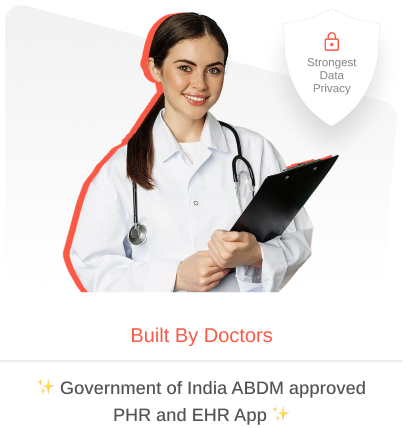Educating Patients on Patient Portals and Health Apps: A Step-by-Step Guide
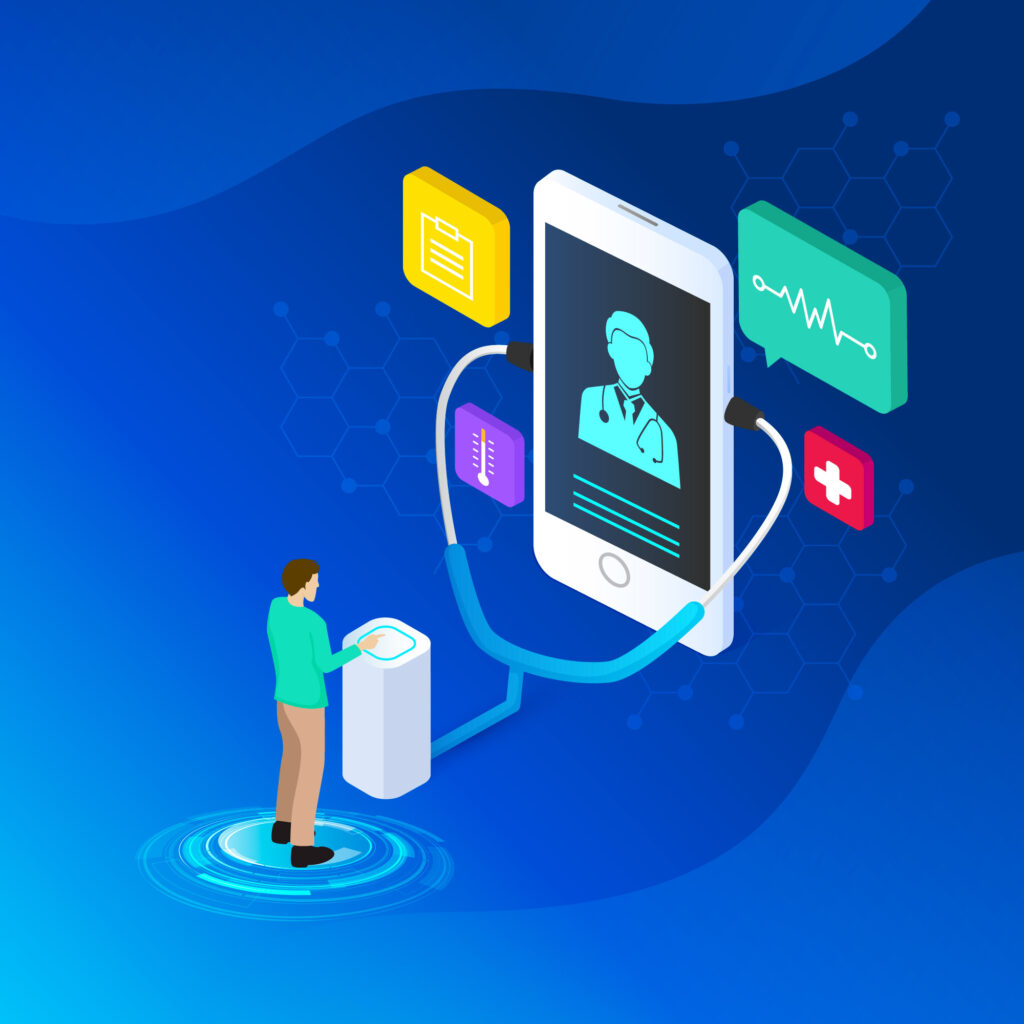
The rapid digital transformation of the healthcare system has revolutionized i.e. how medical services are delivered and consumed. From online appointment scheduling to real-time access to medical histories, technology allows both providers and patients in unprecedented ways. At the heart of this evolution are patient portals and mobile health applications—tools that put important health information directly into the hands of patients. Patient portals serve as secure digital ways where individuals can access their medical records, lab results, prescriptions and communicate with healthcare providers. Mobile health apps extend this functionality by enabling users to track vitals, set medication reminders, and monitor chronic conditions on the go. Despite their growing availability, the effective use of these tools depends largely on how well patients understand and engage with them. That’s why education of patient portals plays a very important role. Empowering patients to navigate these platforms confidently leads to better communication, improved treatment and more informed decision-making. Moreover, it improves the overall efficiency of the electronic health record systems and ensures smooth health information management. In this guide, we’ll explore a step-by-step approach to educating patients on using digital health tools, featuring Roojh—a modern, intuitive hospital management software built to simplify patient engagement and make digital healthcare more accessible to everyone. Why is Educating Patients Essential? As the healthcare system increasingly adopts digital tools, one challenge occurs in how patients know how to use digital health tools. Despite the availability of patient portals and mobile health apps, many patients struggle with accessing and navigating these platforms due to barriers like limited technological literacy, fear of data misuse, language limitations, and lack of reliable internet access, especially in rural areas. According to a 2023 survey by the Office of the National Coordinator for Health Information Technology (ONC), nearly 40% of patients reported feeling overwhelmed or confused when using online health systems for the first time. For elderly populations, this number increases significantly due to unfamiliarity with digital interfaces. This digital divide directly affects patient engagement in turn to health outcomes. When patients lack the confidence or knowledge how to use health technologies, they miss critical updates, delay medication adherence or skip follow-ups, all can affect recovery or chronic disease management. Educating patients addresses these gaps by promoting digital literacy and enhancing overall trust in the healthcare system. It transforms passive patients into active participants in their care journey, leading to improved communication, greater transparency and better management of personal health information. From a provider’s perspective, this also supports more efficient health information management. When patients know how to update their records, track their symptoms, or share relevant data through portals and apps, it reduces the administrative burden on clinics and ensures a more accurate and holistic view of the patient’s health history. In practical, solutions like Roojh offer user-friendly interfaces and step-by-step guidance that make the adoption of these digital tools easier. Hospitals using Roojh have seen a measurable increase in patient satisfaction and participation, simply by investing in basic onboarding and tech education during appointments. By closing the knowledge gap, patient education becomes the foundation of truly connected and patient centered digital care. Step-by-Step Patient Education Framework Step 1: Awareness and Introduction The first step in patient education is simply making them aware that these tools exist and can make their lives easier. Most patients still rely on traditional methods like calling the clinic or visiting in person to check appointments or access test results. That’s why creating awareness through multiple channels is essential. Hospitals and clinics using Roojh can leverage flyers at reception desks, SMS notifications post-appointment, and direct physician recommendations during consultations to introduce the benefits of patient portals and mobile health apps. This multichannel approach ensures patients are informed in a way that’s accessible to them. Highlighting features like 24/7 access to records, reduced paperwork, and faster communication can help patients understand the immediate benefits of using Roojh. Visual branding, such as posters with QR codes leading to the app download, can boost engagement at clinics. By positioning Roojh not just as a patient management software but as a personal health assistant, healthcare providers can build curiosity and motivate patients to take the next step. Step 2: Easy Onboarding and Registration Once awareness is created, the next important step is onboarding. The sign-up process should be simple, secure, and stress-free. Roojh streamlines this experience with one-click sign-ups and OTP-based logins, removing the common friction points that discourage new users. At the clinic level, front-desk staff or health navigators can guide patients through their first login. Hospitals can set up digital kiosks or assign tech-savvy staff to assist with app downloads and profile creation, ensuring no patient is left behind. Roojh’s intuitive design is built for inclusivity, offering an interface that doesn’t require tech expertise. Clean layouts, simple menus, and easy to understand icons make navigation more easy. Smooth onboarding sets the tone for a positive digital experience and reduces drop-off rates. When patients feel confident using Roojh from the start, they’re more likely to use it regularly to manage appointments, lab results, and prescriptions which are the key components of any good patient management software. Step 3: Hands-On Training Training patients to use health portals effectively ensures they fully understand the app’s capabilities and can maximize its use. Roojh encourages hands-on learning through a combination of group classes and visual learning tools. Hospitals can organize small workshops in waiting areas, where trained staff demonstrate how to book appointments, check lab reports, and request medication refills using the app. Additionally, personalized sessions can be offered to patients needing extra help, such as elderly users or those with limited tech experience. Instructional videos and printed booklets available in clinics help reinforce learning after the session. Roojh also supports touchscreen kiosks, allowing patients to interact with a demo version before committing to the full platform. Step 4: Demonstrate Key Features Understanding what the app can do is important. Patients are more likely to stay engaged when they see the value of the
EHR Implementation Costs: What You Need to Know

Electronic health record systems (EHR) have become an essential component of modern healthcare, streamlining patient data management, enhancing workflows, and improving patient care. While their benefits are undeniable, the implementation of these systems comes with significant financial considerations. Understanding the costs associated with EHR implementation is important for healthcare providers to budget effectively and maximize their return on investment. From initial setup expenses to long-term maintenance, every stage of the process requires careful planning. In this blog delves into the critical cost factors involved in adopting an EHR system and how organizations can strategically manage these expenditures. Key Cost Factors Considering EHR Implementation Initial Investment Costs Implementing an electronic health record system requires a substantial initial investment. Healthcare facilities must purchase the EHR software, hardware components such as servers or cloud-based solutions, and other necessary infrastructure. Additionally, integration with existing healthcare systems can increase upfront expenses. Customization is another cost factor, as many organizations require tailored solutions to meet their operational needs. Data migration from legacy systems to the new platform is often complex and time-consuming, necessitating technical expertise and adding to implementation costs. Healthcare providers must allocate adequate funds for these initial expenses to ensure a smooth transition. Training and Staff Onboarding Training is a crucial aspect of EHR adoption. Without adequate training, healthcare professionals and administrative staff may struggle to utilize the system efficiently, leading to operational disruptions. Training programs often include workshops, online courses, and hands-on practice sessions to familiarize users with the software. Costs may also arise from hiring external trainers or developing in-house training modules. Well-structured training ensures that employees can navigate the new patient management software effectively, minimizing errors and enhancing productivity. Investing in training not only improves system adoption but also optimizes workflow efficiency within the organization. Ongoing Maintenance and Support Beyond the initial investment, organizations must budget for ongoing maintenance and technical support. Regular software updates, security patches, and troubleshooting services are necessary to keep the EHR system functional and secure. Subscription fees for cloud-based EHR solutions and costs associated with a dedicated IT support team contribute to long-term expenses. Effective health information management requires continuous system optimization, ensuring smooth operations and data integrity. Without proper maintenance, healthcare facilities may experience system failures, security vulnerabilities, and reduced operational efficiency, making proactive management essential. Data Security and Compliance Costs Ensuring compliance with healthcare regulations is a fundamental aspect of EHR implementation. Protecting patient data is critical, requiring robust cybersecurity measures such as encryption, multi-factor authentication, and intrusion detection systems. Compliance with HIPAA and other data protection laws necessitates regular audits, legal consultations, and investments in security infrastructure. Healthcare providers must allocate funds for cybersecurity training to educate staff on best practices for data protection. A failure to meet regulatory standards can result in significant legal penalties and reputational damage, making security investments a non-negotiable expense. Customization and Integration Expenses Many healthcare facilities require customized EHR solutions tailored to their specific workflows. Customization may involve developing specialty-specific templates, modifying system functionalities, and integrating third-party applications such as laboratory management or billing software. Seamless interoperability within the healthcare system is crucial for enhancing efficiency and patient care coordination. However, the more customization a facility requires, the higher the associated costs. Balancing customization within budget constraints is essential to achieving an optimal solution that meets operational needs without excessive spending. Downtime and Productivity Loss Transitioning to an EHR system often results in temporary disruptions to daily operations. Staff members need time to adapt to the new system, which can lead to slower patient processing and potential revenue loss. To minimize productivity loss, healthcare facilities can adopt phased implementation strategies, allowing different departments to transition at different times. Running parallel operations with legacy systems can also ease the shift, ensuring that critical processes continue without major disruptions. Planning for downtime costs and developing strategies to mitigate workflow interruptions are essential to maintaining service quality during implementation. Return on Investment (ROI) Considerations Despite the high upfront costs, electronic health record systems offer significant long-term financial and operational benefits. Improved efficiency reduces administrative burdens, while enhanced data accessibility leads to better patient outcomes. Automation of routine tasks, streamlined documentation, and real-time data access contribute to increased productivity. Additionally, healthcare facilities may qualify for government incentives or reimbursements for EHR adoption, further offsetting costs. By carefully assessing potential savings and improvements in service quality, organizations can justify their investment and ensure long-term profitability. Read More: Electronic Health Record Systems (EHR): A Complete Guide Conclusion EHR implementation involves a series of complex financial and operational decisions. From initial investments to ongoing maintenance, security, and productivity considerations, healthcare providers must strategically manage resources to maximize the benefits of their patient management software. While the costs can be significant, the long-term advantages—such as improved health information management, enhanced patient care, and streamlined workflows—make EHR adoption a worthwhile investment. By carefully planning each stage of implementation and prioritizing staff training and security, healthcare organizations can ensure a smooth transition and maximize the value of their EHR systems. Roojh provides the best solutions to help healthcare providers effectively manage EHR implementation costs while optimizing efficiency and compliance.
Electronic Health Record Systems (EHR): A Complete Guide
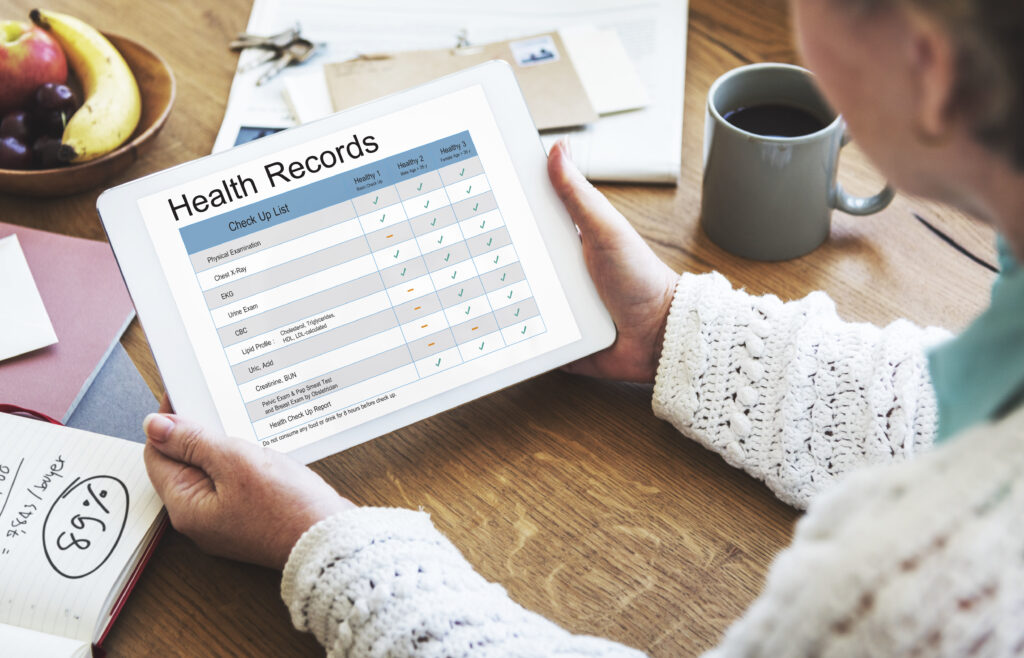
As digitalization occurs in the healthcare industry, the Electronic Health Record systems play a critical role in streamlining operations, improving patient care, and optimizing workflow. These systems integrate patient management software with advanced health information management tools to provide seamless, real-time access to medical records. By eliminating paper-based documentation, EHRs improve efficiency, reduce errors, and promote data-driven decision-making. In this guide, we will explore what EHR systems are, their advantages, types, challenges, and their future role in the evolving healthcare system. What Are Electronic Health Record (EHR) Systems? Electronic Health Record Systems are digital platforms that store, manage, and retrieve patients’ medical history, treatment plans, laboratory results, and other important health information. These systems are designed to enhance the efficiency of the healthcare system by providing healthcare professionals with real-time access to patient records. EHR systems go beyond simple documentation by integrating patient management software that facilitates scheduling, billing, and prescription management. They enable easy communication among healthcare providers, ensuring better coordination of care. Additionally, they help in maintaining regulatory compliance and data security through robust health information management practices. As the demand for digital healthcare solutions grows, EHR systems continue to play an essential role in medical institutions worldwide. Advantages of Electronic Health Record Systems Improved Patient Care EHR systems enhance patient care by providing accurate and up-to-date medical histories, reducing errors, and supporting evidence-based treatment decisions. Doctors can access critical information such as allergies, medication history, and test results in real-time. Automated alerts and decision-support tools help in diagnosing and managing chronic diseases more effectively. Integration with the software ensures easy coordination between healthcare providers, leading to improved treatment outcomes. With EHRs, healthcare professionals can track a patient’s progress over time and adjust treatments accordingly. Moreover, electronic prescriptions reduce medication errors, improving overall patient safety. Increased Efficiency and Workflow Optimization By digitizing patient records, EHR systems eliminate the need for physical storage and manual paperwork and this significantly improves workflow efficiency. Automated documentation and recovery processes saves time for both medical staff and administrative personnel. Integrated health information management tools streamline appointment scheduling, billing, and insurance claims processing. This reduces administrative burdens, allowing healthcare professionals to focus on patient care. Additionally, EHRs minimize redundant tests by providing instant access to past diagnostic results. Real-time data sharing among departments ensures smooth coordination and faster decision-making. Enhanced Data Security and Compliance EHR systems incorporate advanced security measures such as encryption, access controls, and audit logs to safeguard patient information. Compliance with regulatory standards like HIPAA and GDPR ensures the confidentiality and integrity of medical records. These systems offer role-based access, restricting unauthorized personnel from viewing sensitive data. Cloud-based EHR solutions provide secure data backups, preventing loss due to hardware failures or cyber threats. Regular security updates and monitoring further enhance protection against data breaches. By maintaining accurate and secure records, EHR systems help healthcare organizations build patient trust and regulatory compliance. Better Coordination and Communication Among Providers EHR systems improve coordination between primary care physicians, specialists, and other healthcare providers by enabling better data exchange. Instant access to shared records ensures that all involved professionals have a complete understanding of a patient’s medical history. This reduces duplication of tests and prevents conflicting treatments which help in enhancing patient safety. Telemedicine integration within EHR systems further improves communication, especially for remote consultations. Enhanced interoperability between different healthcare facilities ensures continuity of care for patients across various settings. Reduced Costs and Resource Utilization The adoption of EHR systems leads to cost savings by eliminating paper-based documentation, reducing administrative expenses, and optimizing resource allocation. Automated processes lower staffing costs by minimizing the need for manual data entry. EHRs reduce duplicate testing and unnecessary hospitalizations, saving both patients and healthcare facilities significant expenses. Digital billing and automated insurance claim processing speed up reimbursements, improving financial efficiency. Furthermore, improved patient care and reduced readmission rates lead to long-term cost benefits. By optimizing workflow and reducing inefficiencies, EHRs make healthcare delivery more cost-effective. Types of Electronic Health Record Systems 1. Cloud-Based EHR Systems Cloud-based EHR solutions store patient data on secure remote servers, allowing access from any location with an internet connection. These systems offer scalability, reduced IT maintenance costs, and automatic software updates. These systems are ideal for healthcare providers looking for cost-effective and flexible solutions. They support interoperability by enabling smooth data exchange between different healthcare facilities. Additionally, cloud storage enhances disaster recovery capabilities by ensuring data backups. Security features such as encryption and multi-factor authentication protect patient information from unauthorized access. 2. On-Premise EHR Systems On-premise EHR systems store data within a healthcare facility’s internal servers, offering complete control over security and customization. These systems require higher upfront investment and IT maintenance but provide enhanced data privacy. Large hospitals and healthcare institutions prefer on-premise solutions due to their ability to integrate with existing infrastructure. Organizations can customize the system based on specific workflow requirements. Since data remains within the facility, these systems reduce dependency on third-party vendors. However, they require dedicated IT teams to manage updates, security protocols, and system performance. 3. Specialty-Specific EHR Systems Specialty-specific EHRs are designed to cater to the unique needs of particular medical fields, such as cardiology, dermatology, and paediatrics. These systems include customized templates, tools, and workflows customized to the specific requirements of different specialties. Specialty EHRs improve efficiency by streamlining documentation and diagnostic procedures for specialized treatments. They integrate with medical imaging and diagnostic devices relevant to the specialty. Physicians benefit from automated recommendations based on specialty-specific guidelines. These EHRs enhance patient outcomes by ensuring specialized treatment protocols are followed effectively. Read More: How Patient Management Software Helps Reduce Medical Errors Challenges in Implementing EHR Systems 1. High Initial Costs The implementation of EHR systems requires substantial financial investment in software, hardware, training, and ongoing maintenance. Small healthcare practices may find it challenging to allocate sufficient resources for adoption. 2. Data Security Concerns The risk of cyber threats and data breaches remains a major concern for healthcare organizations using digital records. Regular security audits and
Electronic Health Records vs. Hospital Management Software: What’s the Difference?
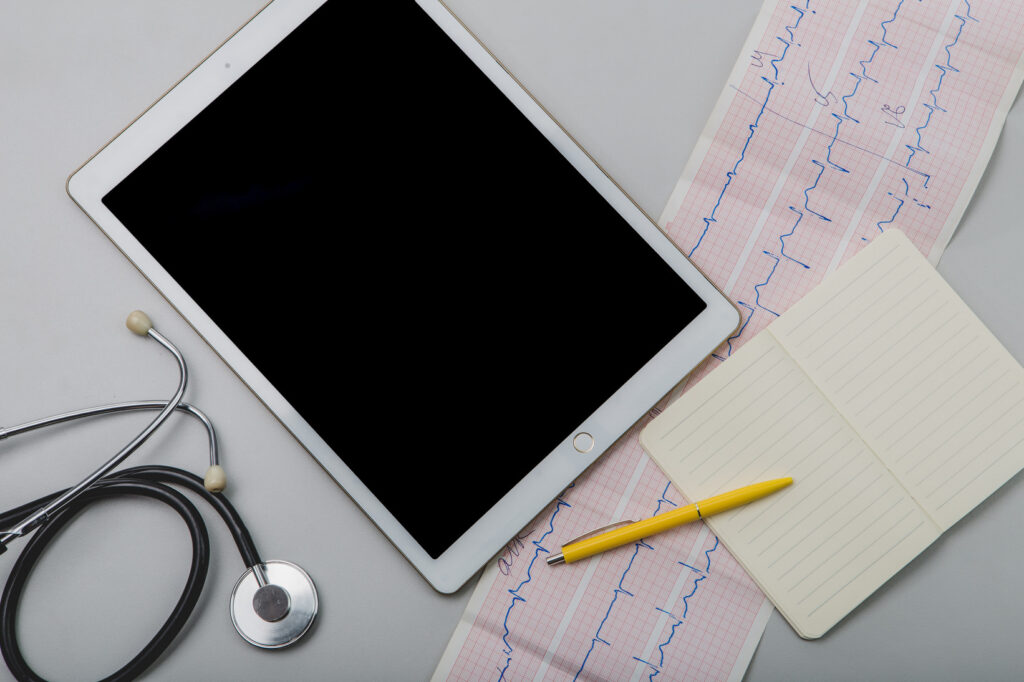
The healthcare industry has observed a significant change with the adoption of various digital tools that improve efficiency and patient care both. Among these health tools, electronic health records (EHR) and hospital management software (HMS) plays a very vital role in smooth medical processes. Along this, both tools have some essential functions which cater to different aspects of healthcare administration. To implement the right technology within a healthcare management system, first we have to understand their basic difference with their features which is necessary for.healthcare providers Electronic Health Records The EHR stands for Electronic Health Records, which records a patient’s whole paperwork in the digital form and replaces the traditional paperwork. These platforms assemble medical history, treatment plans, prescriptions, lab results, and diagnostic images, ensuring easy access to critical data and more. EHR is a well-integrated system that definitely improves clinical decision-making by providing real-time updates on patient health status. Along with this, it ensures conformity with regulatory standards, and provides smooth communication between medical departments and external healthcare institutions and ensures good care. Features and Benefits of EHR Hospital Management Software THe HMS stands for Hospital Management Software, that provides a more comprehensive solution that goes beyond medical records. It integrates various administrative and clinical functions within a healthcare management system, facilitating hospital workflows, patient engagement, and operational efficiency. This software streamlines with the best features like appointment scheduling, billing, resource allocation, and inventory management too. HMS is the combination of multiple functionalities as it improves coordination among different departments, better optimizing service delivery and improving healthcare outcomes. Features and Benefits of HMS Key Differences Between EHR and HMS Aspect Electronic Health Records (EHR) Health Management Software (HMS) Main Function Manages patient medical records Smoothly maintains administrative and clinical operations Scope Focuses on patient history and medical data Focus on scheduling, billing, inventory, and resource management User Base Healthcare providers and specialists Hospital administrators, doctors, and support staff Interoperability Connects with other medical institutions Integrates various hospital departments Regulatory Compliance Ensures data security and privacy Supports operational compliance with healthcare laws How to Decide the Right Solution for Healthcare Facilities Selecting between these two technologies depends on the specific needs of a healthcare facility. Hospitals or institutions, want to maintain efficient data recording and restore patient care will benefit from EHR. However, institutions looking to optimize operations, manage financial transactions, and improve workflow efficiency require a healthcare management system move with HMS functionalities. Outcome The successful integration of digital solutions ensures perfect healthcare delivery and better patient experiences. EHR plays a pivotal role in clinical documentation and regulatory compliance, while HMS offers a broader scope by managing overall hospital operations. While deciding the appropriate solution, it totally depends on organizational requirements and long-term goals. An effective software for hospitals combines the strengths of both, ensuring enhanced efficiency, improved patient outcomes, and a well-coordinated medical environment.
Patient Management Software: Enhancing Health Efficiency

Patient management is a very important area in a developing health care system that focuseson quality care and making the processes very efficient. Patient Management Software or PMSin the healthcare setup becomes quite a revolutionist in dealing with tasks related to patients.Such as, appointment scheduling and medical records are also done through PMS, whereeverything is kept in the same path to work more efficiently and derive great satisfaction fromthat in the life of the patient. Let us now go through the features and benefits or importance ofpatient management software in modern healthcare. What is Patient Management Software? Patient management software is the digital medium that is meant for simplifying and fine-tuningthe performance of multiple areas of a person’s life concerning patient care and administration.It furnishes healthcare facilities with an integrated system to manage appointments, histories,billing, and even communication with a unified approach toward patients. Benefits of Patient Management Software Improved Patient Care Ensures timely and personalized care by organizing patient informationefficiently. Operational Efficiency Reduces administrative workload, allowing healthcare staff to focus on coretasks. Data Security and Compliance Protects sensitive patient data while adhering to healthcare regulations. Enhanced Communication Streamlines interactions between patients and healthcare providers, fosteringtrust and satisfaction. Cost and Time Savings Automates repetitive tasks, saving time and reducing operational costs. Read More: Why Every Healthcare Facility Needs a Patient Management Software Solution? Roojh: Your Best Patient Management Solution Medical practitioners who require a versatile but very durable solution for their patientmanagement software may find one very appropriate from Roojh. Aside from being user friendly,Roojh boasts advanced applications and has well-placed emphasis on data security, allowingcare facilities to provide better patient care with optimized operations. Considerations When Investing in Patient Management Software One requirement for the software is to be patient management software, as the whole worldnow is a jigsaw puzzle, especially in patient satisfaction and productivity. PMS would helphealthcare providers: – Limit mistakes and boost proving accuracy with patient care– Guaranteed patient care provision in time– Adopt modern technology to act favourably amidst competitors Conclusion With the transformation in the healthcare industry, patient management software indeed bridgesthe gap between administering and patient care. Implementing Roojh into the healthcarefacilities will improve outcomes, result in better quality of treatment, and set new standards inexcellence. Embrace the future of managing patients and, indeed, experience the positiveimpact on the facility.

